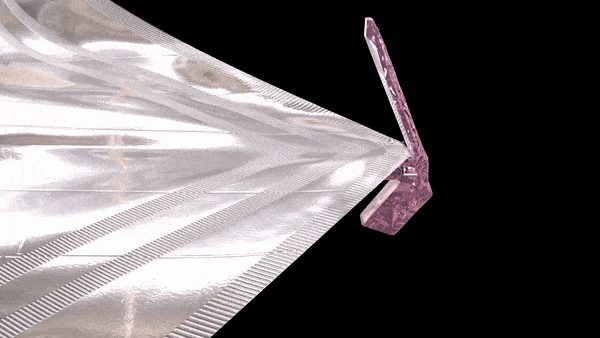Engineers at NASA decided to hold off tensioning the vast sunshield of the James Webb Space Telescope to allow more time to verify the overall performance of the observatory and ensure that everything is going according to plan. The key procedure was initially supposed to be carried out during the weekend and now it could begin as early as today, according to the latest statement by NASA.

The Webb telescope was launched on December 25th and is now under a deployment process due to take a month, necessary to get it ready to gather data. Most steps are controlled from the ground and while NASA has a schedule for the work, this is tentative and can be adjusted along the way by mission leaders – as it happened now. It’s one of the most striking scientific achievements in the past years, and engineers want to be sure everything runs smoothly.
“Nothing we can learn from simulations on the ground is as good as analyzing the observatory when it’s up and running,” Bill Ochs, Webb project manager, based at NASA’s Goddard center, said in a statement. “Now is the time to take the opportunity to learn everything we can about its baseline operations. Then we’ll take next steps.”
Further controls
Work on the sunshield began last week, when the two pallets holding it were deployed and locked on either side of the telescope’s primary mirror. Protective covers were rolled off each pallet, exposing the sunshade membranes to space. On Friday, the two telescoping booms began extending, pulling out both sides of the shield and unfolding the membranes.
Now, with both booms already extended, the sunshield must be tensioned to produce a gap between each layer, generating space for excess heat to migrate. But as the boom extension took longer than expected, mission managers delayed tensioning first to Saturday and then to Sunday, making sure the motors were at the required temperature.

NASA doesn’t give live coverage of the Webb telescope deployment, with the last media briefing held on Christmas Day after the launch. But in its latest blog, the space agency said engineers wanted to better understand how the Webb is functioning in its new environment, ensuring the motors to be used for sunshield tensioning are at optimal temperatures.
Since its launch, Webb has already corrected its trajectory with two precision thruster firings, deployed its solar panel, unlimbered the antenna it will use to send back data to Earth and extended a flap to counteract the solar wind pressure. So far, so good. The telescope has also elevated its main mirror and science instruments to isolate them from the heat generated by on-board systems.
“We’ve spent 20 years on the ground with Webb, designing, developing, and testing,” Mike Menzel, Webb’s lead systems engineer, said in a statement. “We’ve had a week to see how the observatory actually behaves in space. It’s not uncommon to learn certain characteristics of your spacecraft once you’re in flight. That’s what we’re doing right now.”
The sunshield, made of five thin Kapton layers, is very important for the telescope’s goal of capturing light from the stars and galaxies that lighted up after the Big Bang of the cosmos 14 billion years ago. The telescope has to be refrigerated to within 50 degrees of absolute zero (400 degrees below zero Fahrenheit) in order to register that radiation. The first images from Webb should be available by summer 2022.
Was this helpful?



